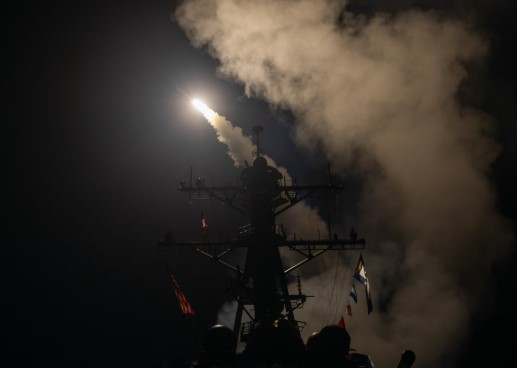The U.S. Senate Appropriations Committee has taken urgent steps to refill the Pentagon’s fast-depleting supply of missiles and ammunition, including THAAD interceptors. Lawmakers say two major events have drained these stockpiles: Donald Trump’s bombing campaign against the Houthis in Yemen and ongoing military aid to Ukraine.
Senators Sound Alarm Over Low Ammo and THAAD Supplies
On July 31, the Senate Appropriations Committee voted 26-3 to approve a major change to next year’s defense budget. The bill increases the Pentagon’s $9 billion request for ammunition by an extra $7.3 billion.
Senator Mitch McConnell, the committee’s chairman, said the U.S. used up large amounts of key weapons during recent military operations. “Recent operations in the Middle East illustrate how quickly modern warfare can exhaust our arsenal of critical munitions,” he said. McConnell noted that the Biden administration did not plan for maximum production of certain important weapons, including THAAD interceptors.
Senator Chris Coons, the top Democrat on the defense subcommittee, said the Houthi campaign in the Red Sea showed how fast the U.S. goes through advanced weapons. He also said it’s been difficult to send enough arms to Ukraine while keeping U.S. supplies ready.
🚨 Pentagon alarm bells ring — U.S. sends 2 of 7 THAAD systems to Israel in missile crisis
In July, the Pentagon briefly stopped some deliveries to Ukraine. Officials said they needed to make sure America had enough weapons for its own needs. The exact number of available munitions is classified, but the Pentagon said it had requested $2.5 billion to increase missile production, and another $1.3 billion to improve the military’s supply system.
Houthi Attacks Drained THAAD Missiles and Advanced Arsenal
Many of the concerns about low missile supplies stem from a short but intense U.S. military campaign. Operation Rough Rider, launched during the Trump administration, targeted Houthi militants in Yemen.
The two-month operation cost the Pentagon at least $500 million in weapons, according to a U.S. official. When adding in lost aircraft and other costs, the total rose above $1 billion. A Senate aide also said the military used hundreds of millions of dollars worth of advanced munitions, including THAAD systems, during this time.
🇺🇸⚖️ Historic Crypto Overhaul: Senate Passes First-Ever Stablecoin Law in Landmark Bipartisan Vote
Two Navy fighter jets, each worth $60 million, accidentally fell off aircraft carriers and sank into the Red Sea during the operation. Houthi forces also shot down nine MQ-9 Reaper drones. These unmanned aircraft cost about $30 million each, totaling $270 million in losses.
Even though President Trump stopped the campaign on May 6, the Houthis continued their attacks. Recently, they sank a Greek cargo ship and fired a missile toward the Israeli city of Jaffa. On July 27, they again promised to strike any cargo ships going to Israeli ports, no matter which country owns them.
Billions Earmarked for Air Defense Rebuild
Of the $7.3 billion increase in the Senate’s budget plan, $5.2 billion will go toward buying more missiles. The rest—$2.1 billion—will expand production lines for powerful air defense systems, including Patriot and THAAD missile systems.
THAAD, short for Terminal High Altitude Area Defense, is one of the U.S. military’s most advanced missile interceptors. It can shoot down incoming ballistic missiles before they hit their targets. THAAD missiles are especially important in high-risk areas where missile attacks are likely.
Ukraine relies on Patriot systems to defend itself from frequent missile and drone attacks by Russian forces. On July 13, Trump said he would send Ukraine more Patriot systems, calling them “desperately needed.” European countries have also helped, with Germany agreeing to pay for two Patriot units and Norway for one.
THAAD Deployment Fortifies Israel’s Defense
In another region, Israel used THAAD systems supplied by the U.S. to block multiple missile strikes from Iran during a 12-day air conflict in June. These successful intercepts showed the value of THAAD technology in real combat situations.
Although the Department of Defense has kept quiet about how many THAAD or Patriot systems remain in stock, it has said that American forces remain ready to respond to any threat. A Pentagon spokesperson said they wouldn’t share exact inventory details for security reasons but confirmed that the U.S. has strong air defense capabilities across the globe.

